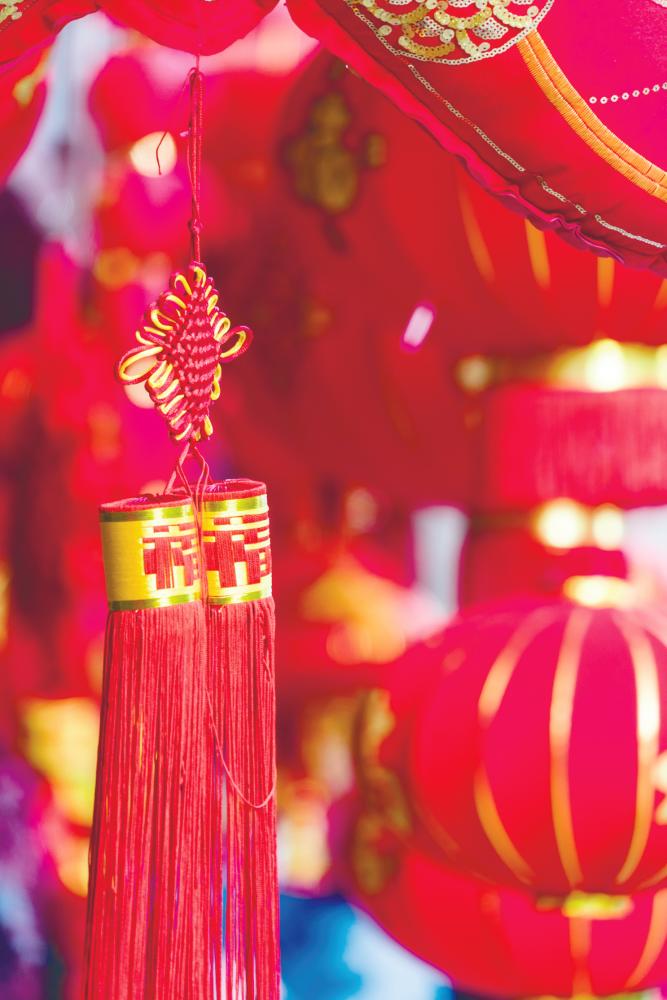It’s as clear as day that (the colour) red is all the rage during times of festivity and celebration. However, it is especially prominent during the Lunar New Year.
How can anyone beg to differ when it is quite plain to see red and its entire lineup of perhaps, 50 shades of red, quite literally everywhere during the Chinese New Year festival? From red attire to red envelopes/packets (for lucky money/ang pau), red decorations and red firecrackers, table settings and party backdrops, mall decor and mind you, even red undergarments (underwear included) - and all in the name of good fortune and good luck!
Known as quite the superstitious, clan, Chinese culture has it that red is an auspicious colour. However, it has relevance to many other things including power, courage, danger, passionate love, energy, violence, anger, adventure and more.
Why red is considered lucky to the Chinese goes way back in time. There are two supporting myths. The first revolves around the founder and first emperor of the Han Dynasty, Emperor Gaozu, who was said to be the “son of the Red Emperor” (god of southern China associated to the directional south). And because an emperor was (mostly) honoured and respected by his people, sometimes through fear and obligation because of his authority and privilege, the colour red was associated with power and prestige.
The second myth involves a mythical beast called Nian Shou, believed to devour livestock and people during the Chinese New Year. According to the legend, the beast was sensitive to loud noise and afraid of the colour red. Hence, it became tradition at Chinese New Year, to light firecrackers, hang red lanterns and red scrolls on doors and windows, and perform the Chinese Lion Dance to loud drum beats; giving reason for red to be revered and augur protection.
The shade that bears much significance in Chinese culture is also an important hue in commemorating other occasions. It also has different connotations in different countries, as in red coloured eggs given out by parents at the first month/first year of their child’s birth; rising stock prices which are indicated in red in Korea, Japan and China, (whereas in the US, red reflects declining prices), yet often represents happiness, wealth, vitality and fertility.
In western culture, while red depicts excitement, energy, passion, action, love and danger, it is associated with communism and revolution in countries like Russia. Across Asian cultures red is seen as an important color that symbolises good luck, joy, prosperity, celebration, happiness and longevity. Because it’s such an auspicious colour, Asian brides (in Malaysia, the Malays and Indians) often have their hands adorned in red Henna art while red envelopes containing money are given out n special occasions. In some parts of India, red is associated with purity, sensuality and spirituality; whereas in countries like Africa, it has to do with death, and in Nigeria, red represents aggression and vitality. In Egypt, it’s considered a lucky colour and signifies good fortune, and in Iran, it refers to courage.
In prehistoric times, red was reported to have connotations with fire and blood, as well as energy and primal life forces. It was also thought to be a magical and religious colour and resonated with super-human strength according to the Greeks. In Christianity, red symbolised the blood of Jesus.
The colour red has more associations and significance than any other hue. It is also said to be the “oldest” colour in life. This festive season, with all the information on red and its “nuances”, perhaps you’ll see red in a different light, more than just a colour.Besides, psychologists say that you can impact perception by wearing red, also associated with “ong” according to Chinese belief, thought to bring about success, good luck, good fortune and wealth. That said, may we resonate with the colour red and revel in the festivities to welcome a prosperous Year of the Pig - Gong Xi Fa Cai!









